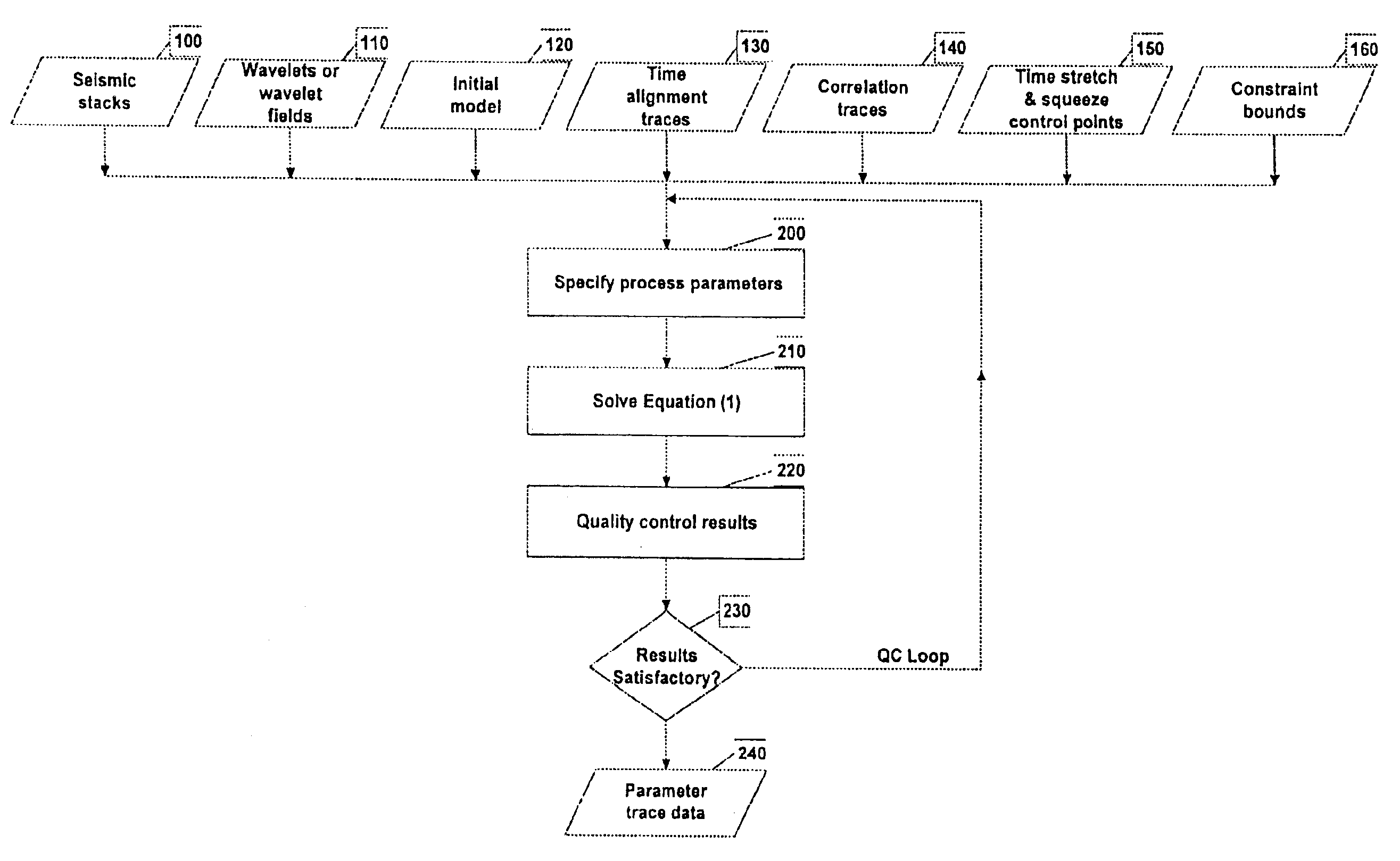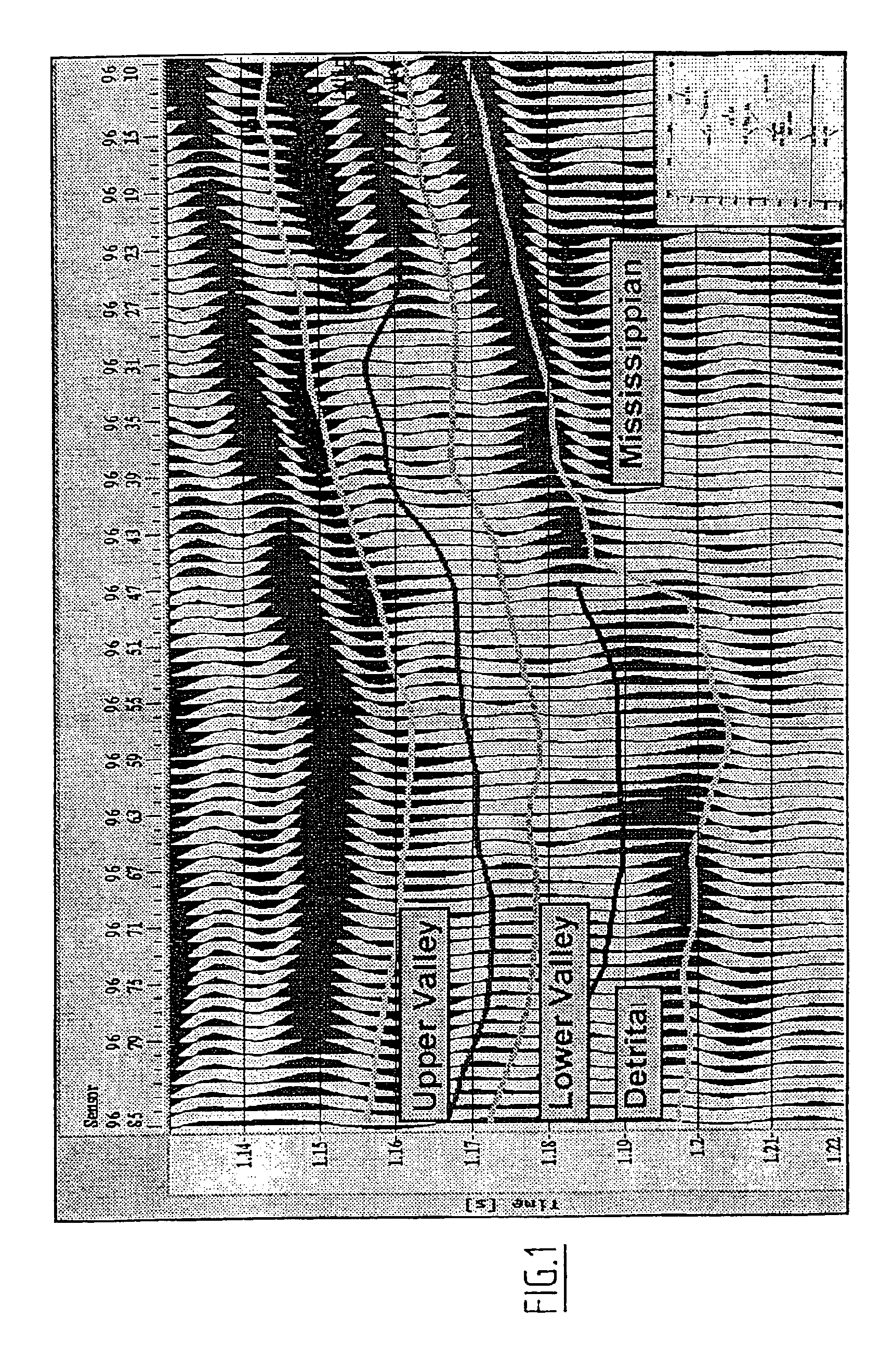Method of estimating elastic and compositional parameters from seismic and echo-acoustic data
a technology of compositional parameters and seismic data, applied in the direction of amplifiers, gravity wave measurement, reradiation, etc., can solve the problems of time lapse survey seismic amplitude change, fluid production, and rock matrix impact, etc., to achieve simple, fast and robust
- Summary
- Abstract
- Description
- Claims
- Application Information
AI Technical Summary
Benefits of technology
Problems solved by technology
Method used
Image
Examples
Embodiment Construction
The invention can be embodied in many different forms. The disclosure and description of the invention in the drawings and in this description are illustrative and explanatory thereof, and various changes in the sequence of processing steps, of the parameters in the processing and of the process details may be made without departing from the scope of the invention.
The invention is a practical method to estimate the elastic or rock composition parameters of the subsurface from seismic data. Acquired seismic data illuminates points in the subsurface over a range of angles of incidence. Key to the success of the method is to utilize the amplitude information in the seismic data and the relative changes of amplitude with angle of incidence. The subject method is described in the context of application to seismic data acquired at or close to the earth surface or along the sea bottom. However, the method is equally applicable to seismic data otherwise acquired, e.g. along a borehole, and ...
PUM
 Login to View More
Login to View More Abstract
Description
Claims
Application Information
 Login to View More
Login to View More - R&D
- Intellectual Property
- Life Sciences
- Materials
- Tech Scout
- Unparalleled Data Quality
- Higher Quality Content
- 60% Fewer Hallucinations
Browse by: Latest US Patents, China's latest patents, Technical Efficacy Thesaurus, Application Domain, Technology Topic, Popular Technical Reports.
© 2025 PatSnap. All rights reserved.Legal|Privacy policy|Modern Slavery Act Transparency Statement|Sitemap|About US| Contact US: help@patsnap.com



